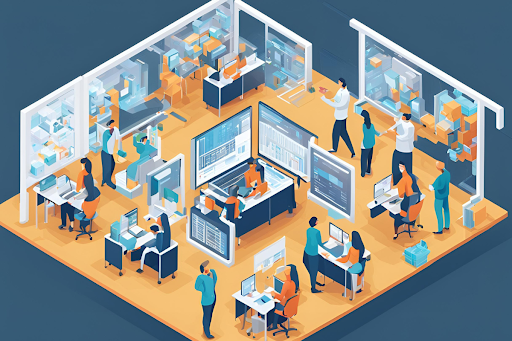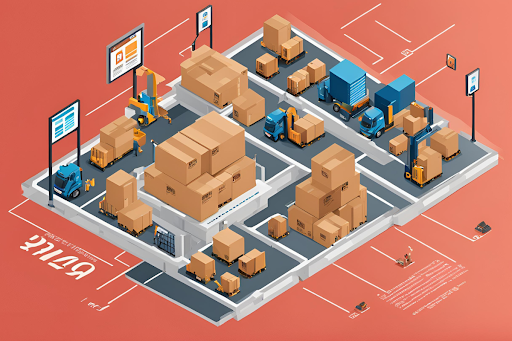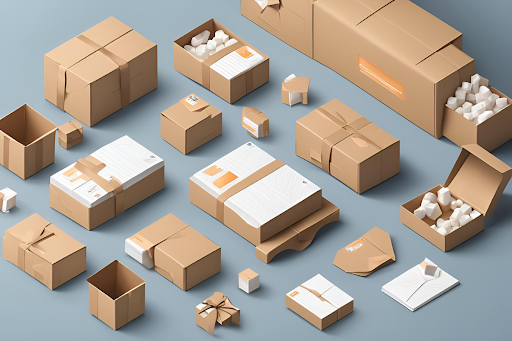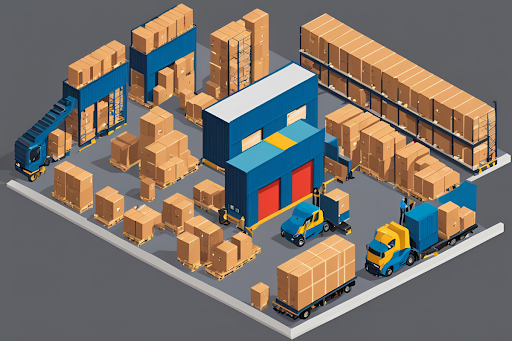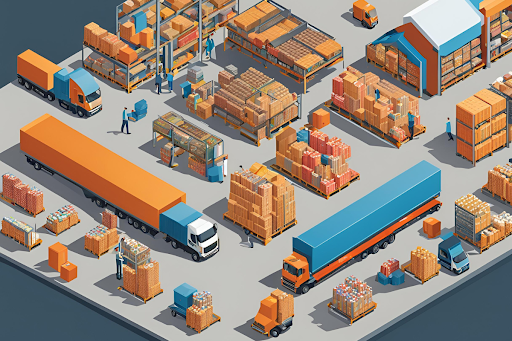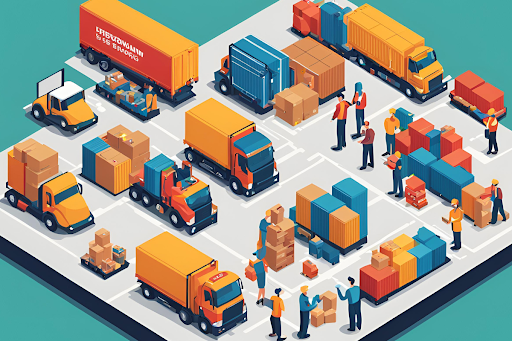Strategic Warehousing: Optimizing Your Supply Chain with Transparent Solutions
Rising costs. Delayed shipments. Unhappy customers. These are the real effects of bad warehousing that happen to businesses every day. Many businesses waste time and money trying to manage their logistics in-house, taking their attention away from growing their core business.
But what if you could turn those supply chain headaches into opportunities? What if you could find a warehousing partner who gets your business?
What is Strategic Warehousing?
Understanding the relationship between warehousing and logistics is crucial for business success. Strategic warehousing builds on this foundation by combining smart facility placement, inventory management, and distribution methods into one unified system. It creates an efficient operation designed to reduce transportation costs while improving order processing speed.
A good warehouse is the foundation of your supply chain. By placing it near key shipping routes, it minimizes transport time and costs. The system has flexible storage solutions that adapt to your changing needs and give you complete visibility of your inventory. Smart layout design maximizes space and reduces overhead and processing time.
Supply Chain Management Impact
Strategic warehousing connects your brand, suppliers and customers. This method delivers measurable results that impact your bottom line. When done right it reduces operational costs through facility placement and streamlined processes.
It’s not just about cost savings. Your customers get faster delivery times and higher satisfaction rates. The system has inventory accuracy through real time tracking and systematic organization. And you get predictable pricing with no hidden fees so you can budget and forecast with confidence.
Cost and Operational Savings
Strategic facility placement saves big on transport costs. When your warehouse is near major transport hubs you naturally reduce shipping costs across your distribution network. This becomes even more valuable as your business grows.
The cost savings add up through operational efficiency. A well-designed warehouse minimizes internal movement and reduces labor and equipment maintenance costs. This systematic approach to organization and movement creates lasting operational improvements.
Most valuable is the predictability that comes with transparent pricing. Every cost component is laid out so you can budget and forecast with confidence. No surprise costs and stable operational costs.
Order Fulfillment Excellence
Processing time impacts customer satisfaction. Strategic warehousing speeds up and improves order fulfillment through systematic organization and processes. By organizing inventory based on actual sales patterns businesses reduce pick time and improve accuracy rates.
Real time tracking gives you visibility throughout the shipping process. This transparency keeps you and your customers informed at every step. The result is higher customer satisfaction and reduced support requests.
Your delivery costs are controlled through planning and route optimization. We take care of last mile logistics so your products get to your customers efficiently and your margins are maintained.
Smart Inventory Management
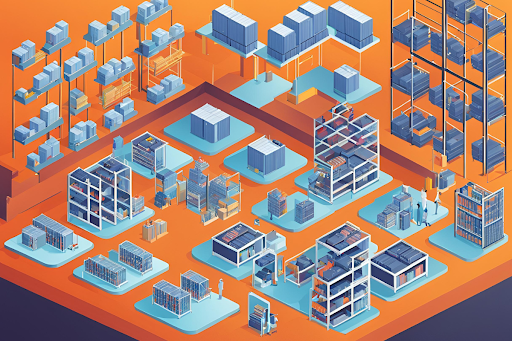
Effective inventory management requires an understanding of product movement patterns. Our storage solutions adapt to your needs and maximize space. Through analysis of sales data, we maintain optimal stock levels that support your business goals and minimize carrying costs.
Fast-moving items are in strategic pick locations, reducing fulfillment time and improving productivity. This thoughtful product placement gives quick processing times and accuracy. Regular demand analysis helps us adjust storage strategies through peak periods so we don’t run out of stock while keeping inventory levels optimal.
Technology Solutions
Modern warehousing requires technology solutions that give real-time visibility and control. Our systems give continuous inventory updates so you always know what you have and where it is. This real-time information prevents stockouts and enables better decision-making.
Quality checks at key points in the fulfillment process ensures high accuracy rates. Our technology monitors environmental conditions where needed to protect your products and maintain their integrity. The system alerts us if conditions change so we can take immediate action.
Choosing Your Warehousing Partner
Your warehousing partner should show more than just storage capabilities – they need to show they understand your business. Location matters, but great customer service is what makes the difference in day-to-day operations.
Real-time support and dedicated account management so you never have to wonder what’s going on with your operations. We take the time to understand your business goals and create solutions to help you achieve them. This personalized service, combined with our transparent pricing model, means a partnership that’s all about you.
Custom Storage Solutions
Our facilities can accommodate all your storage needs while maintaining product care. Advanced monitoring systems maintain precise environmental conditions where needed to protect product quality and integrity. Our security measures include controlled access, continuous monitoring and regular inventory verification.
For large inventory businesses, we create storage solutions that maximize space and ease of access. Our team considers weight requirements, access patterns and handling specifications when designing your storage layout. This attention to detail maintains product quality while supporting operations.
Facility Design and Operations
Our warehouse design is operationally efficient and sustainable. Every square foot has a purpose, storage zones and picking areas are designed to optimize order fulfillment. Thoughtful design supports productivity while product handling.
Sustainability is part of our operations, supporting both environmental and cost savings. Smart lighting and climate control reduce operational costs, and water conservation and waste reduction programs minimize environmental impact. These practices appeal to environmentally conscious customers while maintaining predictable costs.
Strategic Warehousing FAQs
What are the 5 main activities in a warehouse?
The five main warehouse activities are receiving, putaway, storage, picking, and shipping. Receiving ensures correct inventory intake, putaway organizes goods, storage maintains inventory efficiently, picking retrieves items for orders, and shipping prepares products for delivery.
What are the three strategies of picking in warehousing?
The three main picking strategies are piece picking, batch picking, and zone picking. Piece picking involves selecting individual items per order, batch picking groups multiple orders to improve efficiency, and zone picking assigns workers to specific areas to streamline retrieval.
What is 5S in warehousing?
5S in warehousing is a lean methodology for workplace organization: Sort (remove unnecessary items), Set in Order (arrange efficiently), Shine (clean regularly), Standardize (establish procedures), and Sustain (maintain discipline for long-term efficiency).
What are the four basic functions in a warehouse?
The four basic warehouse functions are receiving, storing, picking, and shipping. Receiving ensures proper inventory intake, storing organizes goods efficiently, picking retrieves items for orders, and shipping ensures timely dispatch to customers.
Summary
Strategic warehousing is the key to business growth through efficiency, cost reduction and happy customers. At Innovative Warehouse Solutions we stand out through great customer service and transparent pricing – two things missing in warehousing.
No more industry headaches with our real-time support and transparent pricing. We build relationships by taking the time to understand your business and create solutions to help you grow. Try working with a partner that puts you first.
Where Can Liquor Be Shipped in the US? A Guide to State Alcohol Delivery Laws
Are you struggling to ensure compliant alcohol shipping across state lines? Many growing brands find themselves overwhelmed by varying state regulations and frequent updates to shipping requirements. At Innovative Warehouse Solutions, we help businesses like yours focus on growth while we handle the complexities of order fulfillment, including alcohol shipping compliance.
Understanding Liquor Shipping Laws in the United States
Federal and state regulations create a specific structure for alcohol distribution in the US. Federal guidelines establish basic requirements, but individual states set their own rules for alcohol sales and shipments. For growing brands looking to scale their operations, understanding food & beverage logistics has become essential to successfully navigate these complex requirements. This specialized knowledge helps businesses adapt their shipping strategies to meet both federal standards and state-specific protocols.
Understanding State-by-State Differences in Alcohol Shipping Rules
The varied alcohol shipping rules across states stem from deep historical roots and local preferences. After the repeal of Prohibition in 1933, each state created its own approach to alcohol sales and distribution. Some states opted for strict control through state-run systems, while others chose more open distribution methods.
This state-level control created three main approaches to alcohol distribution. “Control states” like Utah and Mississippi oversee all aspects of alcohol sales directly. “License states” such as California allow private businesses to handle distribution with state oversight. “Mixed states” combine elements of both systems, resulting in unique regional requirements.
Recent public health considerations continue to shape these rules. States aim to balance consumer access with safety protocols, leading to different approaches in age verification and delivery tracking. For example, some states now accept digital ID verification for alcohol deliveries, while others still require physical checks.
The 2020-2021 period brought significant changes to alcohol shipping policies. Many states adjusted their rules to support businesses during temporary closures. Some of these changes became permanent, creating new opportunities for alcohol brands.
What States Allow Liquor to Be Shipped?
| State | Shipping Allowed | Notes |
| Alabama | No | Does not permit direct alcohol shipments to consumers |
| California | Yes | Flexible options with specific oversight. Wine shipments follow different rules than spirits |
| Florida | Yes | Allowed with specific permits and carrier approvals |
| Hawaii | Yes | Requires special permits and extra documentation |
| Illinois | Partial | Supports local retail delivery while limiting out-of-state shipping |
| Michigan | Yes | Allows local delivery and select direct shipping with proper documentation |
| Mississippi | No | Strict rules, no direct spirits shipments (limited wine club exceptions) |
| Montana | Yes | Allows shipping with proper licensing and permits |
| Nebraska | Yes | Supports flexible shipping options with appropriate licensing |
| Nevada | Yes | Requires valid licenses and licensed carriers |
| New Hampshire | Yes | Supports flexible shipping options with appropriate licensing |
| New York | Partial | Allows certain alcohol shipments through licensed wholesalers |
| North Carolina | No | No direct spirit shipments, wine deliveries need proper licensing |
| Oklahoma | No | Direct shipping limited, most distribution through licensed wholesalers |
| Oregon | Yes | Accepts direct shipping with specific permits and reporting systems |
| Utah | No | All sales must go through state-licensed stores or DABC |
| Washington DC | Yes | Enables alcohol delivery through licensed services |
| Wisconsin | Yes | Allows delivery within licensed zones with specific guidelines |
States That Allow Liquor to Be Shipped Directly to Consumers
Several states welcome direct-to-consumer liquor shipments with specific guidelines:
- Nebraska and New Hampshire support flexible shipping options with appropriate licensing
- Oregon accepts direct shipping with specific permits and reporting systems
- Washington DC enables alcohol delivery through licensed services
States with Partial or Conditional Liquor Shipping Laws
Different states set various limits on liquor shipments:
- California accepts wine deliveries but sets specific guidelines for spirits
- New York allows certain alcohol shipments through licensed wholesalers
- Illinois supports local retail delivery while limiting out-of-state shipping
States That Prohibit Liquor Shipments
Several states do not allow direct-to-consumer liquor shipments:
- Alabama and Mississippi do not permit direct alcohol shipments to consumers
- Utah controls alcohol distribution strictly, ruling out direct shipments
- Oklahoma directs all liquor sales through state-licensed wholesalers
State-by-State Guide to Liquor Shipping Laws
Can You Ship Alcohol to Utah?
- Utah’s Department of Alcoholic Beverage Control (DABC) oversees all liquor distribution with strict protocols. The state does not allow direct alcohol shipments to consumers – all sales must go through state-licensed stores or the DABC.
Can You Ship Alcohol to Montana?
YES! Montana sets specific conditions for alcohol shipping:
- Wholesalers may distribute to retail locations with proper licensing
- Registered wineries can ship directly to consumers
- Small breweries may ship with appropriate permits
Can You Ship Alcohol to Nevada?
YES! Nevada sets specific guidelines for alcohol shipping that our team helps brands follow. The state requires:
- Valid Nevada liquor licenses for sellers
- Licensed carriers for all shipments
- Valid ID checks and signatures upon delivery
Can Liquor Be Shipped to North Carolina (NC)?
- North Carolina’s ABC (Alcoholic Beverage Control) system sets strict rules for liquor distribution:
- The state does not permit direct spirit shipments
- Wine deliveries need proper licensing
- ABC stores handle all liquor sales
Can You Get Alcohol Delivered in Michigan?
YES! Michigan’s updated delivery rules create opportunities for alcohol brands. Current guidelines support:
- Local delivery through licensed retailers
- Select direct shipping from approved sellers
- Third-party delivery with proper documentation
Can Alcohol Be Delivered in Wisconsin?
YES! Wisconsin sets clear guidelines for alcohol delivery that our team helps brands follow:
- Local retailers may deliver within licensed zones
- Out-of-state shipping has specific limits
- Third-party services need licensed partnerships
Can You Ship Alcohol to Florida?
YES! Florida allows alcohol shipping when businesses meet specific requirements:
- Licensed vendors may deliver within approved areas
- Out-of-state sellers need Florida-specific permits
- Carriers require special alcohol delivery approval
Can You Ship Alcohol to California?
YES! California offers flexible alcohol shipping options with specific oversight:
- In-state retailers can provide local delivery
- Out-of-state sellers need California licensing
- Wine shipments follow different rules than spirits
Can You Ship Alcohol to Oklahoma?
- Oklahoma sets specific rules for alcohol shipping:
- Spirits face direct shipping limits
- Licensed wholesalers handle most distribution
- Local delivery options have expanded recently
Can You Ship Alcohol to Hawaii?
YES! Hawaii’s location creates unique shipping considerations:
- Special permits for direct shipping
- Extra documentation for between-island delivery
- Specific carrier requirements
Can You Ship Alcohol to Mississippi?
- Mississippi sets strict rules for alcohol distribution:
- No direct spirits shipments to consumers
- Wine clubs have limited exceptions
- State-authorized channels handle sales
How to Legally Ship Liquor in the U.S.
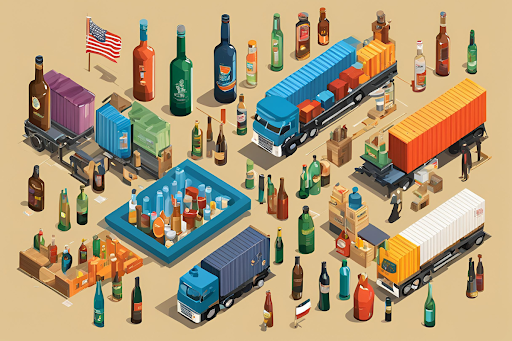
Setting up efficient shipping operations requires careful attention to multiple factors. Understanding how to estimate shipping costs helps you plan your distribution budget effectively.
Choosing appropriate packaging materials – including selecting the right different types of cardboard for your products – ensures safe delivery and compliance with carrier requirements. Additionally, knowing how to work with dims and weight can significantly reduce your shipping expenses while maintaining compliance with state-specific regulations.
Our team helps implement reliable systems for tracking compliance across states. We support proper age verification, shipping records, and package labeling. By partnering with IWS, you get real-time insights into regulations across your shipping network.
What Happens If You Ship Liquor to a Restricted State?
Shipping alcohol without proper authorization leads to serious business risks. State agencies actively watch for unauthorized shipments and issue significant fines. These penalties can affect your licenses and operations, especially for repeat issues.
Future Trends in Liquor Shipping Rules
Alcohol shipping practices continue to change with market needs and consumer buying habits. As online sales grow, states review their shipping rules to balance accessibility with safety. These changes create both opportunities and challenges for growing brands.
What States Can Liquor be Shipped to in the US FAQs
How much does it cost to get an import license in the US?
The cost of an import license in the US varies by product and agency. Many imports do not require a license, but regulated goods, such as alcohol or firearms, may need permits from agencies like the ATF or FDA. Fees can range from $100 to several thousand dollars.
How to import liquor to the USA?
Importing liquor to the US requires a Federal Basic Permit from the Alcohol and Tobacco Tax and Trade Bureau (TTB). Importers must comply with state laws, pay duties, and ensure proper labeling. A licensed US importer must be designated for customs clearance.
Can you FedEx alcohol in the US?
FedEx allows alcohol shipping only for licensed businesses with an alcohol shipping agreement. Individuals cannot ship alcohol. Shipments must comply with state and federal regulations, and both sender and recipient must be legally authorized.
Is shipping alcohol a felony in the US?
Shipping alcohol illegally can result in fines or criminal charges, but it is not always a felony. Penalties depend on state laws, the amount shipped, and whether taxes were evaded. Commercial shipments require licenses and compliance with federal and state laws.
What are the requirements to import in the USA?
Importing to the USA requires compliance with US Customs and Border Protection (CBP) regulations. Businesses need an Importer Number, pay duties and taxes, and meet specific product regulations set by agencies like the FDA or USDA.
Conclusion
Successfully shipping liquor across the US demands attention to varied state rules. For growing brands, finding the right fulfillment partner makes a crucial difference. Innovative Warehouse Solutions brings proven expertise in managing alcohol shipping requirements, helping your business expand while staying compliant.
Let our team handle your shipping compliance while you focus on growth. With real-time support and transparent processes, we help ensure your products reach customers through approved channels. Contact us to learn how our solutions can support your alcohol shipping needs.
Flat Rate Pallet Shipping: Comparing Moving Box Store Rates and Shipping Options
Are variable shipping costs eating into your profits? Many businesses are limited by carrier rates that change based on distance, weight, and season. It’s particularly true for health and beauty, lightweight consumer goods, and beverage companies. When shipping costs are unpredictable, planning for growth is tough.
But there’s an answer: flat rate box store rates provide stable and transparent pricing for sustainable growth.
Flat Rate Pallet Shipping and Box Options
A flat-rate pallet shipping program sets a fixed price for shipping palletized goods within certain weight and size ranges. For businesses shipping health and beauty products or lightweight consumer goods, this means predictable costs and easy logistics. The flat rate structure helps keep shipping budgets stable and delivery consistent.
Choosing the Right Boxes and Moving Kits
Shipping starts with the right materials. Moving kits are boxes and packing materials designed for your business. These kits include:
- Beverage Boxes: Sturdy walls and dividers
- Boxes for Fragile Items: Extra cushioning
- Size-specific options: For unique products
Packing experts can determine the best kit for your inventory and volume.
Industry-Specific Box Solutions
Shipping delicate or odd-shaped items requires the right packaging. Health and beauty companies need boxes to protect glass containers and liquids. Beverage companies need compartmentalized boxes to keep bottles safe. Knowing these specific needs helps businesses reduce damage and increase customer satisfaction.
Beverage companies need boxes with dividers and reinforced corners, available in various sizes for different bottle quantities. Companies shipping glassware or fragile items can use double-wall construction boxes with extra protection zones. This means that beverage and other industries require custom-made box options that fit their needs, literally!
Custom-length boxes serve specific product needs; art shippers use corner protection. Each box type has specific design elements that address the unique shipping requirements of these industries.
Real Results and Service
Companies have seen big results after using the right boxes and flat-rate services. It’s normal for a health and beauty company to reduce damage by 45% with custom packaging. The same can go for a craft beverage company that reduced shipping costs by 30% while keeping their product safe with the right box.
Service is key to achieving these results. Packing experts provide real-time help in choosing the right boxes and packing methods. This personalized service helps businesses keep customer satisfaction high and costs low.
Cost and Value
Looking beyond the base rate helps you see the whole picture of shipping costs. Businesses often find cost savings in bulk buying of specialty boxes. Good packaging means fewer damage claims and better customer retention.
Total Shipping Cost
Box cost is just part of the shipping cost. Consider:
- Bulk buying for common box sizes
- Packaging durability
- Fewer claims through proper packaging
- Time savings with pre-assembled kits
- Inventory storage
Green Options
Reusable containers are a responsible choice for businesses concerned with environmental impact. These containers provide value through the following:
- Multiple uses for returns and storage
- Less packaging waste
- Brand reputation
- Long-term cost savings
Expert Implementation Support
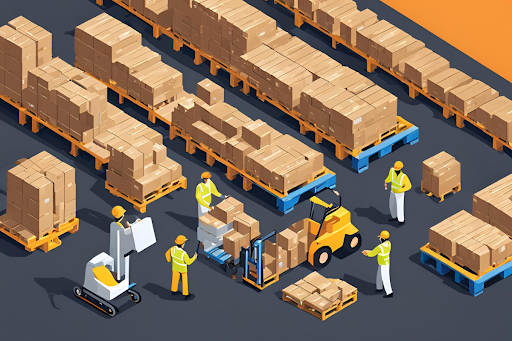
Shipping success starts with the right materials. Health and beauty companies need a mix of cushioned boxes for cosmetics and larger boxes for bundled orders. Beverage companies need compartmentalized boxes to keep bottles safe in transit.
Get Expert Help
Our packing experts at Innovative Warehouse Solutions will:
- Review your shipping data: We’ll look at your current shipping history to find ways to save you money and improve efficiency.
- Find the right box size: We’ll match your product dimensions to the most cost-effective box size to reduce waste and shipping costs.
- Recommend specialty packaging: Based on your product we’ll suggest the right packaging for safe delivery.
- Build custom kits: We’ll create a custom packing kit with all the materials you need for your specific shipping needs.
- Ongoing support: Our team is available for real time consultation as your shipping needs change or questions come up.
Quality and Best Practices
Box quality impacts product protection in transit. Check:
- Meets industry standards: Each box is tested to meet carrier requirements and durability specs.
- Materials match product: We choose materials based on your product weight, fragility, and specific protection needs.
- Protection matches fragility: Custom cushioning solutions are designed to match your product’s sensitivity to impact and movement.
- Sizing allows for filling: Box dimensions are chosen to minimize void space while providing enough protection.
- Secure closures for transit: We recommend the right sealing methods and materials to keep the package intact during shipping.
Before selecting shipping materials, many businesses benefit from having the right fulfillment partner. Our 3PL selection guide can help you evaluate potential partners who understand your packaging needs. Once you’ve found the right partner, explore our guide to ecommerce packaging materials to ensure you’re using the best supplies for your products.
Pro Tips
Our shipping experts recommend the following:
- Start with a pro assessment: Begin your shipping program with a thorough review of your current and future needs.
- Plan for peak: Build up your shipping supplies ahead of time for busy seasons.
- Keep lines of communication open with support: Regular check-ins with your dedicated support team will help prevent problems from arising.
- Track damage rates: Monitor shipping results to find patterns and adjust packaging accordingly.
- Consider regional shipping environments: Adjust your packaging based on climate and typical transit conditions in different delivery areas.
Flat Rate Pallet Shipping FAQs
How do you calculate shipping for a pallet?
Calculate pallet shipping costs based on weight, dimensions, freight class, distance, and carrier rates. Freight carriers use the National Motor Freight Classification (NMFC) system to determine pricing. Additional factors include fuel surcharges, delivery speed, and accessorial fees.
What are the rules for flat-rate shipping?
Flat-rate shipping charges a fixed price based on box size rather than weight or distance. The package must fit within the carrier’s designated flat rate box and not exceed weight limits. USPS, UPS, and FedEx offer flat rate options with varying restrictions.
When to use flat rate?
Use flat rate shipping when sending heavy or dense items over long distances. It is cost-effective when weight-based rates exceed the flat rate fee. Businesses use it for predictable pricing and expedited delivery services.
How do you calculate pallets?
Calculate pallets by measuring length, width, and height, then multiplying for total volume. Standard pallets are 48×40 inches. Pallet count depends on stacking method and available space in a truck or container. Weight distribution affects freight classification and shipping cost.
How much is flat rate shipping?
Flat rate shipping costs vary by carrier and package size. USPS Priority Mail Flat Rate starts at $9.65 for small boxes, while larger boxes cost up to $22.80. UPS and FedEx have similar pricing, with additional fees for international shipping and oversized packages.
Control Your Shipping Costs
Shipping costs shouldn’t hold you back from growing your business. At Innovative Warehouse Solutions, we understand the challenge of managing logistics costs while maintaining quality service. We combine transparent pricing with personal support to help you achieve both.
Our support team is available in real-time to help with your shipping needs, so you have the right solutions at clear pricing. We build long-term relationships that support your business growth through service and transparency.
Ready to streamline your shipping? Contact IWS today to learn about our flat-rate shipping and transparent pricing. www.invwhs.com or call our support team to talk to us about your business.
Packaging Supplies for Ecommerce: Essential Materials for Secure Shipping
Are shipping headaches holding you back? For health and beauty, beverage, and lightweight consumer goods brands, packaging problems can quickly turn into customer satisfaction issues and increased costs.
Managing inventory, choosing the right materials, and quality control takes focus away from what matters most – growing your business. We handle the fulfillment headaches so you can focus on getting more orders.
E-commerce Packaging
Fulfillment starts with the right packaging materials. Each product type – from delicate cosmetics to bottled beverages – requires specific packaging to protect during transit and keep costs in check. Our experience with high-volume shippers helps brands make smart choices that scale.
Mailers and Envelopes
For lightweight consumer goods and small health and beauty products, choosing the right mailer is key to optimizing shipping costs and product safety. Poly mailers work for non-breakable items, bubble mailers for cosmetics, and small bottled products. Paper mailers for eco-friendly beauty brands.
Shipping Boxes and Cartons
Beverage brands and companies shipping multiple items need boxes that protect products from damage and keep costs down. Single wall boxes work for standard health and beauty products, and double wall boxes for heavier products like beverage multipacks.
Packing Tape and Adhesives
Growing brands know that sealing materials directly impact customer satisfaction. Our fulfillment team tests and stocks reliable options that balance cost and performance, water-activated tape for heavy shipments, and paper-based tapes for sustainable packaging choices.
Protective Packaging
Product protection impacts your bottom line, as damage in transit affects profitability and customer trust. Based on our experience, we help brands choose protective materials that fit their needs.
Our solutions include using air pillows to protect bottles and jars and minimize weight, bubble wrap to protect delicate cosmetics and glass containers, and paper void fill to support eco-friendly shipping.
Working with Packaging Suppliers
Choosing the right packaging partner makes a big difference for growing brands. Our team provides transparency and real-time support so you can make informed decisions about your fulfillment needs.
Value of a Professional Partner
Big brands benefit from working with experienced fulfillment teams. Following 3PL best practices when selecting a partner is crucial for long-term success. Our partnership approach is to make fulfillment simple and predictable. We give you direct access to packaging expertise and clear upfront pricing. When you have questions our support team provides quick and practical solutions to keep you moving.
Get in touch through our Pricing Page to learn more.
E-commerce Packaging Challenges
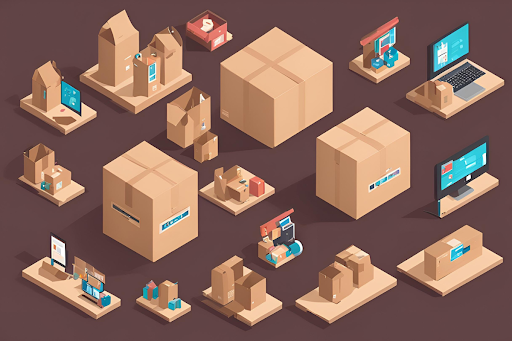
Growing businesses face packaging challenges that impact profitability and customer satisfaction. Below are the most common obstacles brands face and how we at IWS address each one:
Cost Control
Material costs are a big part of fulfillment costs, especially for health and beauty brands with multiple product lines. Working with a fulfillment partner gives you access to better pricing through volume purchasing without needing ample storage space or capital investment.
For brands shipping more significant quantities, understanding flat rate pallet shipping options can help optimize costs while maintaining reliable delivery times.
Our pricing model allows brands to see and control their packaging costs while maintaining quality standards. Check out our Software Page to learn how our systems track and manage fulfillment costs.
Speed and Accuracy
As you grow quick and accurate fulfillment becomes more important. Our approach includes:
- Strategic material selection and storage setup
- Team training for consistent performance
- Quality checks
- Process reviews for continuous improvement
Environmental Responsibility
More customers are considering environmental impact when choosing brands. While sustainable materials are often more expensive, they appeal strongly to conscious consumers especially in the health and beauty space. We help brands balance environmental goals with business needs, finding solutions that meet ecological and business requirements.
Summary
In the competitive e-commerce world, having the right packaging approach matters. Brands with $1M+ in annual revenue need fulfillment partners who understand their unique challenges and provide real solutions.
At Innovative Warehouse Solutions, we stand out in several ways. We provide real-time, personalized support that exceeds industry standards and transparent pricing with no surprises and no hidden fees. We have proven expertise in health and beauty, beverage, and consumer goods fulfillment and can provide data-driven solutions for your business. As you grow, our dedicated team will be with you every step of the way with hands-on guidance and support.
Connect with our team through our Contact Page to learn how we can support your growth with reliable, scalable fulfillment services.
Warehousing and Logistics: Understanding Their Relationship in Supply Chain Management
Small and medium-sized businesses get stuck with complex warehousing and logistics. Internal teams get stretched thin, managing inventory, shipping, and cost. As businesses grow, these challenges multiply, opportunities get missed, and customers get frustrated.
But by understanding how warehousing and logistics work together businesses can choose the right fulfillment partner to handle these operations and focus on growth initiatives.
What is Warehousing?
Modern warehousing combines inventory management, order fulfillment, and distribution into one system. For businesses in health and beauty, beverages, and lightweight consumer goods, effective warehousing protects product quality and ensures order processing.
A well-run warehouse runs through real-time tracking systems that keep inventory counts accurate, process orders correctly, and adjust storage layouts according to season. This organized approach helps businesses manage stock levels and capital utilization.
What is Logistics?
Logistics moves products from manufacturers to customers through a network of transportation and distribution. Effective logistics management includes carrier coordination, delivery route optimization, and package tracking to get products to customers on time and intact.
Businesses win when their logistics provider handles carrier relationships, optimizes shipping costs, and provides transparent tracking throughout the delivery process. This full-service approach keeps profits and customer expectations met.
Modern Warehousing Challenges
Running a warehouse has several operational challenges that impact business performance. Space utilization is a constant balancing act between storage capacity and accessibility. Poor space management means inefficient pick routes and slower order processing times. Businesses must also keep inventory counts accurate across multiple locations and manage seasonal fluctuations in stock levels.
Labor management adds another layer of complexity to warehouse operations. Staff training, safety protocols, and performance monitoring require resources. Safety extends beyond compliance; it affects everything from equipment operation to storage layout decisions. These challenges multiply during peak seasons when temporary staff need to be integrated into existing operations quickly.
Technology integration has its own set of challenges. While modern warehouse management systems bring improved accuracy, implementing new software requires careful planning to avoid disruption to business as usual. Businesses struggle with data migration, staff training, and keeping the system accurate during the transition period.
How Warehousing and Logistics Work Together
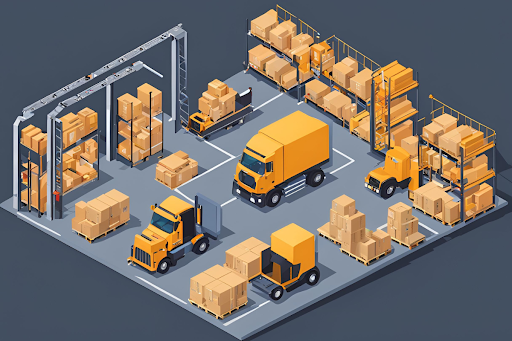
Warehousing and Logistics Connection
Fulfillment success relies on the connection between warehouse management and logistics planning. Having a strategic warehouse helps optimize your supply chain from end to end. IWS software demonstrates this with integrated order tracking and proactive inventory control so businesses can focus on growth, not operations.
Good partnerships help businesses reduce operational costs and improve delivery performance. By combining strategic warehousing with a reliable shipping network,s businesses can reduce shipping costs and maintain high service levels.
Key Technologies for Business Growth
Modern fulfillment systems give small and mid-sized brands the tools to compete. Simple inventory tracking, streamlined order processing, and shipping management give business owners operational control. These systems provide real-time stock monitoring to prevent stock shortages, consistent order processing to handle seasonal fluctuations, simple tracking updates to reduce customer queries, and clear metrics to inform business decisions.
Full-Service Solutions
Modern warehousing comes in many forms to suit different business needs. Distribution centers focus on fast product movement and cross-docking. Fulfillment centers specialize in direct-to-consumer shipping with complex pick and pack operations. Climate-controlled facilities for products that require specific storage conditions.
These facilities offer more than just storage. Value-added services include custom packaging, kitting, and quality control inspections. Advanced inventory management systems track product movement in real-time, providing stock levels and location information. Integration capabilities to connect to various e-commerce platforms and order management systems.
Transportation management services complete the logistics picture, managing carrier selection, route optimization, and delivery schedule. This full-service approach ensures products move from receipt to delivery.
Who to Choose?
Location and Service
Location is key to shipping costs and delivery times when choosing a fulfillment partner. Strategic warehousing reduces transportation costs and gets products to customers fast. Service is just as crucial: real-time support from dedicated teams and clear communication channels to prevent operational disruptions.
Scalable Operation
As businesses grow, their fulfillment needs change. The right partner provides support that grows with the business without disrupting operations. Clear pricing structures to avoid surprise costs and better financial planning. Good partnerships also offer flexible storage solutions that can handle seasonal fluctuations without penalizing them during quiet periods.
What’s Next: Industry Changes for Small Brands
Meeting Customer Expectations
Customer’s expectations for fast and reliable delivery are increasing across all business sizes. Small brands need to match larger competitors’ service levels without breaking the bank. Modern fulfillment systems close the gap by providing accurate order processing and transparent shipping. Full order management includes flexible shipping options and returns processing so brands can build customer loyalty while controlling costs.
Technology for Growth
Small and mid-sized brands need technology that supports today’s needs and prepares for tomorrow’s growth. Early implementation of the exemplary systems avoids common growth pitfalls. Business owners get simple reporting tools to see into inventory, shipping performance and order accuracy without technical expertise.
Performance reporting helps you see patterns in customer behavior and operational performance so you can make informed decisions. Companies want this information without having to manage complex software themselves.
Environmental Responsibility in Fulfillment
Sustainability in fulfillment is increasingly a customer loyalty factor. Simple packaging options and optimized shipping routes reduce environmental impact and costs. Companies can achieve their sustainability goals without sacrificing operational efficiency by partnering with an environmentally conscious fulfillment provider.
Warehousing and Logistics FAQs
What are the types of warehouses in logistics?
The main types of warehouses in logistics include distribution centers, public warehouses, private warehouses, bonded warehouses, and cold storage. Each serves specific storage and supply chain needs.
What are the 4 basic functions in a warehouse?
The four basic warehouse functions are receiving, storing, picking, and shipping. These processes ensure inventory management and efficient order fulfillment.
What are the six functions that make up the inventory and warehousing cycle?
The six functions in the inventory and warehousing cycle are receiving, inspecting, storing, tracking, picking, and shipping. These steps ensure efficient stock control and order fulfillment.
What is the difference between a warehouse and logistics manager?
The main difference between a warehouse manager and a logistics manager is their focus. A warehouse manager oversees inventory storage and operations, while a logistics manager handles the entire supply chain, including transportation and distribution.
Summary
Choosing the right warehousing and logistics partner makes a big difference for growing brands. IWS stands out by having dedicated support teams that provide real-time, personal support – a rare thing in an industry that’s all about impersonal service. With transparent pricing, no hidden fees, and a proven track record of accurate order fulfillment, IWS has the technology, expertise, and personal attention to support your business growth.
Ready to upgrade your fulfillment? IWS has the operational know-how to handle the logistics and the personal touch to help your business grow.
Health and Beauty Logistics: Streamlining Warehousing and Fulfillment for the Industry
Beauty brands are under pressure to keep product quality while meeting fast delivery. Without fulfillment support, growing brands risk product integrity, missing deadlines, and losing customer trust. As sales grow, these challenges take focus away from product development and growth initiatives.
At IWS, we help beauty and wellness brands with $1M+ revenue simplify supply chain complexity with transparent pricing and real-time personalized support. Our systems achieve 99.9% order accuracy in high-volume beauty fulfillment.
What’s Different about Beauty Logistics?
Beauty and wellness products need more than standard warehousing. FDA compliance, temperature control, and batch tracking create complexity that standard fulfillment centers can’t handle.
Our beauty fulfillment experts maintain strict quality control across receiving, storage, and shipping. Each product batch is inspected in detail, with real-time inventory tracking, so you never run out of your best sellers. This focused attention keeps your products intact from warehouse to doorstep.
Beauty Industry Challenges
Running a growing beauty brand means managing complex operational demands that take focus away from your core business growth. Our beauty and wellness clients outsource their fulfillment to us so they can focus on product development and sales growth.
Quality Control & Compliance
Our documented FDA compliance procedures and facility certifications give us credibility in beauty logistics. As an ISO 22716 Good Manufacturing Practices (GMP) certified and FDA-registered facility, we have batch-level tracking systems audited regularly by third parties. Your dedicated account manager will provide you with monthly compliance reports and real-time updates, giving you complete visibility into your inventory status and conditions.
Storage & Product Protection
Our facility systems keep your products intact with precise temperature and humidity control. Natural and organic skincare products are kept in controlled environments and color cosmetics are at the right temperatures. Our facilities have continuous monitoring, backup generators, and alert systems to protect your inventory investment.
Fulfillment That Scales

Beauty brands need fulfillment that is precise as orders grow. Our systems help both start ups and established brands process orders efficiently while keeping product quality and customer satisfaction.
Smart Inventory Management
We track your inventory in real-time across multiple locations, sending low-stock alerts based on your lead times. Our batch and expiration date tracking, with regular cycle counts, achieves 99.9% accuracy. This prevents stockouts of your best sellers while managing product shelf life.
Here are the final sections, focusing on IWS’s core differentiators of customer support and transparent pricing:
Distribution Strategy
We analyze your order patterns and place inventory strategically to reduce shipping costs. Most clients see a significant reduction in shipping costs and can reach 95% of US customers in 2 days. For retail orders, we consolidate shipments to meet compliance requirements while reducing transportation costs. This allows you to compete with bigger brands while keeping your margins healthy.
Technology Integration
Our software platform integrates with major e-commerce systems to automate order processing. You’ll have real-time visibility into inventory levels, order status, and fulfillment metrics through a user-friendly dashboard. The system will generate reports on shipping costs, delivery performance, and inventory trends.
Partnership & Support
Each client has a dedicated account manager who understands their business. Your account manager will monitor performance metrics, suggest process improvements, and respond quickly to your questions. This hands-on support helps identify and solve potential issues before they impact your customers.
Health and Beauty Logistics FAQs
What are the health and beauty sectors?
The health and beauty sectors include skincare, cosmetics, personal care, wellness, and pharmaceuticals. These industries focus on enhancing appearance, hygiene, and overall well-being.
What is considered a health and beauty aid?
Health and beauty aids include over-the-counter medicines, skincare products, hair care, oral hygiene, and dietary supplements. These items support personal care and minor health needs.
What is the definition of health and beauty products?
Health and beauty products are items used for skincare, hair care, cosmetics, and personal hygiene. They promote well-being, appearance, and self-care.
Why IWS for Your Beauty Brand
At IWS, we are different because of our transparent pricing and personalized support. Unlike bigger fulfillment companies, we offer clear pricing with no hidden fees or surprises.
Our dedicated account managers provide real-time personalized support that bigger fulfillment centers can’t match. This combination of pricing transparency and customer support makes us the go-to partner for beauty brands looking to grow.
Contact us to see how we can help you streamline your fulfillment while keeping your product and customer happy.
Drinks Logistics: Streamlining 3PL Solutions for the Food and Beverage Industry
Managing drinks logistics in-house is a resource drain and holds back your business growth. As volumes grow, maintaining temperature control, tracking stock and compliance gets more and more complicated. Small to medium-sized drinks businesses find themselves stuck between rising customer expectations and operational limitations. That’s where specialist 3PL support turns your supply chain headaches into growth opportunities.
What is Specialist Drinks Logistics
Storing and distributing drinks requires more than basic shipping services. Food and drink logistics needs temperature control, specialist handling, and inventory management. Many brands see their teams overwhelmed trying to balance these requirements with growing customer demand.
Product quality suffers when businesses try to do everything in-house. Partnering with experienced 3PL drinks logistics specialists gives you access to proven processes, trained staff, and specialist facilities. A qualified partner has deep knowledge of safety protocols, regulations, and tracking systems to protect your products and brand.
Challenges in Drinks Logistics and Solutions
Temperature Control and Product Protection
Maintaining proper temperature throughout storage and shipping directly impacts product quality and shelf life. Professional 3PL providers use monitoring systems in their facilities and delivery vehicles to maintain optimal conditions.
Innovative Warehouse Solutions provides dedicated cold storage and temperature tracking, with immediate notification systems for any variations. Special care is particularly important for glass containers – our team follows industry-leading practices for how to ship glass bottles of liquid to ensure they arrive safely at their destination.
Proper handling prevents damage during movement and storage. Staff trained in beverage-specific protocols ensure products receive appropriate care at every stage. This careful attention protects brand reputation while reducing losses from mishandled inventory.
Compliance and Quality Control
For drinks businesses, meeting industry standards and FDA requirements is critical. A skilled 3PL partner handles compliance responsibilities, taking the operational burden off you. Their teams are up to date with regulations, perform regular audits, and maintain detailed records to support quality standards.
Inventory Management
Growing businesses need visibility into stock levels and order status. IWS offers real-time tracking through easy-to-use software that gives you complete stock transparency. This visibility prevents stock outs, improves order processing, and gives you the data to make informed business decisions.
Partnering with a 3PL: What to Expect
Choosing the right logistics partner is key to business growth. Businesses should look for experience in drink handling, robust technology, and, most importantly – responsive customer service. The assessment should include facility inspection, equipment review, and scalability.
Quality partnerships deliver more than just storage and shipping. IWS offers:
- Temperature-controlled storage tailored to your product
- Accurate order processing
- Packaging options
- Transparent pricing
- Real-time inventory tracking
- Dedicated customer service support
Growing Through Efficient Operations
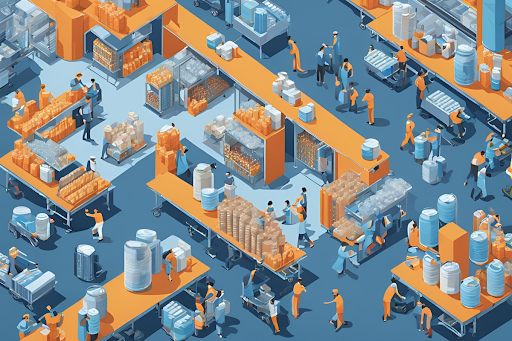
Small to medium-sized drinks brands need flexible packaging solutions. IWS combines storage and packaging services to simplify product preparation and distribution. This integration speeds up order processing while maintaining quality standards. The packaging team follows product-specific protocols to ensure consistent presentation and meet safety and regulatory requirements.
End-to-End Supply Chain Solutions
Products go to many destinations – retail stores to direct customer deliveries. IWS manages the whole distribution process, adapting to each channel’s requirements. System updates give real-time information on order status and stock levels so you can make confident distribution decisions.
Drinks Logistics FAQs
What is the difference between logistics and third-party logistics?
The main difference between logistics and third-party logistics (3PL) is control. Logistics refers to the internal management of transportation, warehousing, and distribution. 3PL involves outsourcing these services to external providers for improved efficiency and scalability.
How are soft drinks transported?
Soft drinks are transported in temperature-controlled trucks or containers to prevent spoilage. Bottles and cans are packed in shrink-wrapped pallets for stability. Bulk shipments may use food-grade tankers for syrup transport before bottling.
What are the 3 types of logistics?
The three main types of logistics are inbound logistics, outbound logistics, and reverse logistics. Inbound logistics manages supply chain sourcing, outbound logistics handles product distribution, and reverse logistics deals with returns and recycling.
What are the protocols for liquid handling?
Liquid handling protocols include using sealed containers, maintaining proper temperature control, following hazardous material guidelines when necessary, and ensuring secure transportation to prevent leaks or contamination. Regulatory compliance depends on the type of liquid being transported.
Your Drinks Logistics Partner
IWS is different in the drinks industry because of our personal service. Unlike big, faceless logistics providers, our dedicated customer service team gets back to you quickly. Each client gets regular updates and direct access to the support team for any questions or special requests.
We structure our services around your business growth. From our transparent pricing to our flexible storage options, we make logistics management easy and efficient. We focus on providing reliable and transparent service so you can focus on growing your business.
To learn how we can help streamline your beverage logistics operations, contact us to discuss your specific needs and goals.
How to Ship Glass Bottles of Liquid: Best Practices for Safe and Secure Packaging
One broken bottle can ruin your whole shipment, disappoint customers, and damage your brand. Many businesses lose revenue and customer trust due to preventable shipping damage. But there’s good news – with the proper packaging and a reliable fulfillment partner, you can ship glass bottles safely to your customers.
Shipping Glass Bottles of Liquid Challenges
Glass bottles need to be handled with care because they are fragile and contain liquid. Business owners of premium products need solutions that protect both their shipments and reputation. Our tracking systems identify issues early so we can adjust packaging and shipping methods.
Each shipping carrier has specific requirements for liquid products in glass containers. USPS requires double sealing and absorbent materials. FedEx and UPS require proper labeling and documentation. We provide current guidelines on these requirements to prevent delays and returns.
Protected Glass Bottle Shipping Best Practices
Package design is key to shipping success. Our expertise helps businesses develop shipping strategies that adapt to business growth and seasonal demands. Testing shows that combining inner and outer protection reduces breakage.
Quality control starts with sealing – caps and closures must match bottle specs exactly. For high-value products, tamper-evident seals build customer trust. Our software monitors seal integrity across shipments to identify issues with specific products.
Glass Bottle Packing Details
Quality control starts with proper bottle preparation and organization. Each bottle needs individual cushioning before being placed in a partitioned container. Our fulfillment specialists use proven methods to keep products safe while maximizing packing efficiency.
The best method is a box-in-box approach for maximum protection. First place each bottle in its own protective sleeve, covering all corners and edges. Then, put those individually wrapped bottles into a divided inner container so they don’t touch each other. That inner box goes into a larger outer box with extra cushioning material filling any empty spaces.
Space management prevents movement during transit. A professional packing process includes:
- Securing bottle caps with extra sealing materials
- Creating structured support zones around bottlenecks
- Adding compression protection for bottle shoulders
- Placing stabilizers between layers for stacked items
Our fulfillment centers use custom dividers and partitions for different bottle sizes. This system creates individual compartments to maintain space while maximizing box capacity. The result is consistent protection across your entire shipment.
Glass Bottle Shipping
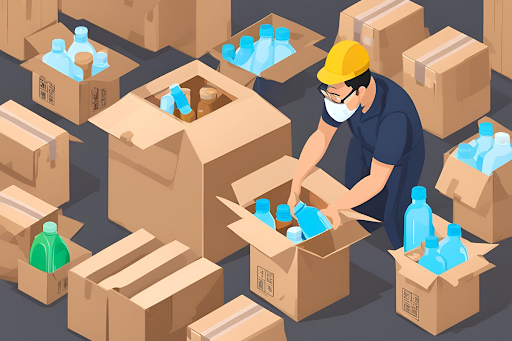
Transportation choices impact product and cost. As experts in beverage logistics, we’ve found that ground shipping provides the best balance of protection and cost. Our software compares real-time rates and delivery times across carriers so you can choose the best shipping method for each order.
Air freight has additional considerations due to pressure changes and more handling. These changes can affect product integrity, especially with pressurized liquids. Sea freight is for large international shipments but requires specific packaging for longer transit times. Our team will help you select the right container and stabilization methods for your needs.
Some liquids have transport restrictions. Products may require special documentation or have shipping restrictions. Our platform identifies these requirements based on your product specs so you can stay compliant and manage costs.
Data-Driven Shipping
Glass bottle shipping is a continuous process of monitoring and refinement. Our platform tracks key metrics like handling time, transit time, and damage rates. This data reveals patterns to improve results and reduce costs.
For bulk shipments, we recommend specific load distribution and stabilization methods. Our team will guide you through proven practices based on your product and volume.
What to Do When Issues Happen
Fast response to shipping issues protects your reputation. Our platform has automated damage reporting to reduce administrative time and improve claim success rates. Real-time tracking gives you control over each shipment’s journey with automated alerts for delays or unusual events. This proactive approach allows for timely customer communication and early problem resolution.
How to Ship Glass Bottles of Liquid FAQs
What liquids are not allowed to be shipped?
Liquids that are flammable, corrosive, or hazardous, such as gasoline, bleach, and alcohol over 70% ABV, are not allowed for shipping. Postal and courier services set restrictions based on safety regulations.
How much liquid can you send in the post?
Postal services typically allow up to 1 liter of non-hazardous liquid per package. Specific limits depend on the carrier and destination country.
Can you ship drinks internationally?
You can ship drinks internationally if they comply with carrier regulations and import laws. Alcohol shipments require special permits and customs clearance.
How much does it cost to ship glassware?
Shipping glassware costs between $10 and $50, depending on weight, distance, and packaging. Insurance and fragile handling fees may increase costs.
Bottom Line
Going beyond basic packaging solutions, glass bottle shipping requires reliable processes with expert support. Other providers offer generic solutions; we offer personalized service and clear communication throughout your fulfillment journey.
We help businesses ship premium liquids with the technology and expertise for damage-free delivery. Unlike big fulfillment companies who treat you like just another account number, we build long-term partnerships focused on your success. Our hands-on approach means you’ll always work with team members who know your products and challenges.
Ready to experience fulfillment service that puts you first? Contact us to learn how we can protect your products with transparent pricing and great service. From your first consultation to ongoing operations, we’re here to help your business grow.
3PL Selection Guide: Best Practices for Choosing the Right Third-Party Logistics Partner
Poor shipping accuracy, hidden fees, and unresponsive support teams create endless frustration for growing businesses working with third-party logistics providers. These issues drain time and resources while putting customer relationships at risk.
Selecting the right 3PL partner can eliminate these headaches and create a foundation for sustainable growth. This practical guide outlines proven criteria to help you choose a fulfillment partner that puts your business first.
Understanding 3PL Partnerships
Third-party logistics companies provide shipping, warehousing, and fulfillment services that support business growth. By partnering with a 3PL, you access established operational networks without investing in infrastructure. This approach lets you concentrate on sales and product development while logistics professionals handle your fulfillment needs.
A strategic 3PL partnership creates measurable advantages. You gain access to fulfillment expertise and advanced technology that reduces operational costs. Your team stays focused on growth initiatives while maintaining control through clear, real-time communication about shipments and inventory.
Key Criteria for Choosing the Right 3PL Provider

Industry Experience & Specialization
A 3PL partner needs deep knowledge of your specific requirements. Different industries demand unique handling – from precision inventory control for health and beauty products to temperature-controlled storage for beverages. Review success stories from similar businesses in your sector to understand how a provider handles specific challenges.
Service expertise builds successful fulfillment partnerships. Examine each provider’s methods for warehouse management, order processing, and shipping operations. Focus on their track record with businesses of similar size and complexity to yours.
Customization and Order Management
Your business needs support that matches your requirements precisely. Quality 3PL partners adapt their processes to fit your needs, from packaging specifications to detailed reporting. This tailored approach ensures smooth operations that are aligned with your growth.
Successful order management across multiple sales channels demands precision. Customers expect reliable delivery if they purchase through websites, online marketplaces, or retail locations. A dependable 3PL coordinates these channels effectively, maintaining accurate inventory and steady order flow. This becomes crucial during busy seasons when demand increases.
Geographic Coverage & Distribution Network
Strategic warehouse placement reduces shipping costs and speeds up delivery times. Consider 3PL partners with facilities that match your customer locations and common shipping routes. The right distribution network shortens transit times and reduces expenses. Ask potential partners how their locations support timely delivery to your target markets.
Smart facility placement gives businesses an advantage in their markets. Warehouses near key transportation hubs provide access to faster shipping at better rates. Small and mid-sized brands can compete effectively while protecting their margins. Consider how each potential partner’s network supports both current needs and future plans.
When evaluating shipping costs, research options like flat rate moving box store rates to understand how different pricing models affect your bottom line – this knowledge helps you better assess potential 3PL partners’ shipping rate structures.
Cost Transparency & Contract Terms
Clear pricing builds trust in business partnerships. Quality 3PL providers share detailed cost breakdowns and explain their pricing structure clearly. You should understand exactly what services you receive and how costs adjust with volume. This straightforward approach helps with budget planning and prevents unexpected charges.
A well-structured contract protects both parties and sets clear service standards. Review all terms thoroughly, paying attention to performance guarantees and service commitments. Ask questions about pricing adjustments as your business grows. Understanding these details prevents future conflicts and ensures long-term success.
Strategic Network Coverage & Growth Support
To find a 3PL that observes smart warehouse placement, determine how a 3PL’s locations align with your primary customer regions and analyze their proximity to major transportation routes and shipping hubs. This ensures maximum speed and minimized shipping costs for your customers.
Also, every shipping zone away from customers increases both cost and delivery time. To avoid these, map your current customer concentrations against potential 3PL locations. From here, you can calculate potential savings from strategically placed fulfillment centers and verify their facilities maintain consistent quality standards across locations.
Another thing you must do is examine how multiple fulfillment locations could reduce shipping times. Consider how faster delivery speeds boost customer satisfaction. With this information, ensure the 3PL can scale operations as you expand into new markets and open new growth opportunities for your business.
Technology & System Integration
Your business requires smooth connections between sales platforms and fulfillment operations. Quality 3PLs provide technology that works seamlessly with your existing systems, offering real-time updates on inventory and orders. This integration gives you accurate data for informed decisions.
Effective data management improves fulfillment operations. Look for partners who offer clear reporting tools that display key performance metrics. Your information should stay protected through robust security measures. These tools keep you informed and in control of your operations.
Security Measures & Safety Standards
A reliable 3PL implements comprehensive protocols to protect your business data and products. Strong security certifications and compliance records demonstrate their commitment to protection. Regular staff training and clear safety procedures reinforce these safeguards across all operations.
Physical security combines state-of-the-art equipment with proven processes. On-site facility tours reveal the quality of security systems and daily safety measures. Additional considerations include specialized protocols for valuable items and insurance coverage that aligns with your protection requirements.
Supply chain protection requires proactive planning and proven backup systems. Effective risk assessment methods help identify potential issues before they affect operations. The best 3PL partners maintain robust recovery procedures and demonstrate consistent reliability during operational challenges.
Performance Metrics & Service Standards
Specific metrics help track fulfillment quality. Focus on measurements like order accuracy rates, shipping times, and inventory precision. Regular analysis of these numbers reveals operational strengths and areas for improvement. This data-driven method maintains service excellence and supports continuous refinement.
Your customers’ satisfaction connects directly to your 3PL’s performance. On-time, accurate deliveries build lasting customer relationships. Monitor these metrics consistently to ensure service quality remains high. Professional 3PL partners value this attention to detail and use performance data to enhance their processes.
Making Your Selection

To examine a 3PL’s business foundation and operational strength, review their years in business and financial stability indicators. When studying their daily operations, pay close attention to order processing capabilities. From here, investigate what current clients and industry references say about their service quality and their experiences with the 3PL. Once you get hold of these 3PL providers, watch how each one handles your questions, as this reveals their communication style.
Conducting a Needs Assessment
Start your evaluation by mapping out your current business operations and requirements. Next, document your daily order volumes and storage needs. Then, list any special product handling requirements that affect your operations.
Moving forward, outline your expected growth and potential market expansions. Additionally, define your service standards and delivery speed requirements. Also, consider how seasonal changes might affect your fulfillment needs.
Setting Service Standards
Once you’ve narrowed down your choices for a 3PL provider, you still need to establish metrics and standards that you and your provider should observe for order accuracy and processing speed. Below are the most important ones:
Technology & System Integration
A strong technology foundation starts with seamless system connections and clear data flow. In particular, examine how their platform connects with your sales channels. Next up is verifying if their system provides real-time updates for orders and inventory.
Don’t forget to do the following as well:
- Focus on their reporting capabilities and data security measures
- Review how they protect sensitive customer information
- Ensure their technical support team responds quickly to questions
Customer Support & Communication
To receive reliable, personal support from dedicated service teams, ask about their response times and the issue resolution process first. You should also examine how they handle urgent situations and special requests – part of this is by looking for proactive communication about potential challenges. Additionally, verify whether they provide regular performance updates, strategic planning support, and guidance for improving operations.
Geographic Coverage & Distribution Network
Review their facility locations relative to your customer base, as strategic warehouse placement directly impacts shipping costs and delivery speed. Then, examine how their network supports your primary shipping routes and future expansion plans.
Moving beyond location, analyze their carrier relationships and shipping options and check their capacity for handling seasonal volume changes.
Cost Transparency & Contract Terms
Clear pricing structures build trust and prevent unexpected charges in fulfillment partnerships. To find this 3pl partner, request detailed breakdowns of all service costs and examine how prices adjust with different order volumes.
You should also carefully study their contract terms and service guarantees. In particular, verify that their billing practices match their promised transparency so you’re not charged additional costs. Lastly, ensure that all performance standards appear clearly in agreements.
Next Steps in Your 3PL Selection
Success in choosing a 3PL partner requires careful planning and thorough evaluation. Following the guide above, you should be able to find the 3PL provider that suits your business needs.
But if you want to skip the process and go straight to a provider that checks all the boxes above, we at Innovative Warehouse Solutions are it. Our team helps assess your unique fulfillment needs. We also create tailored solutions that support your growth goals.
Ready to experience fulfillment done right? Contact our team today to discuss your business needs.

